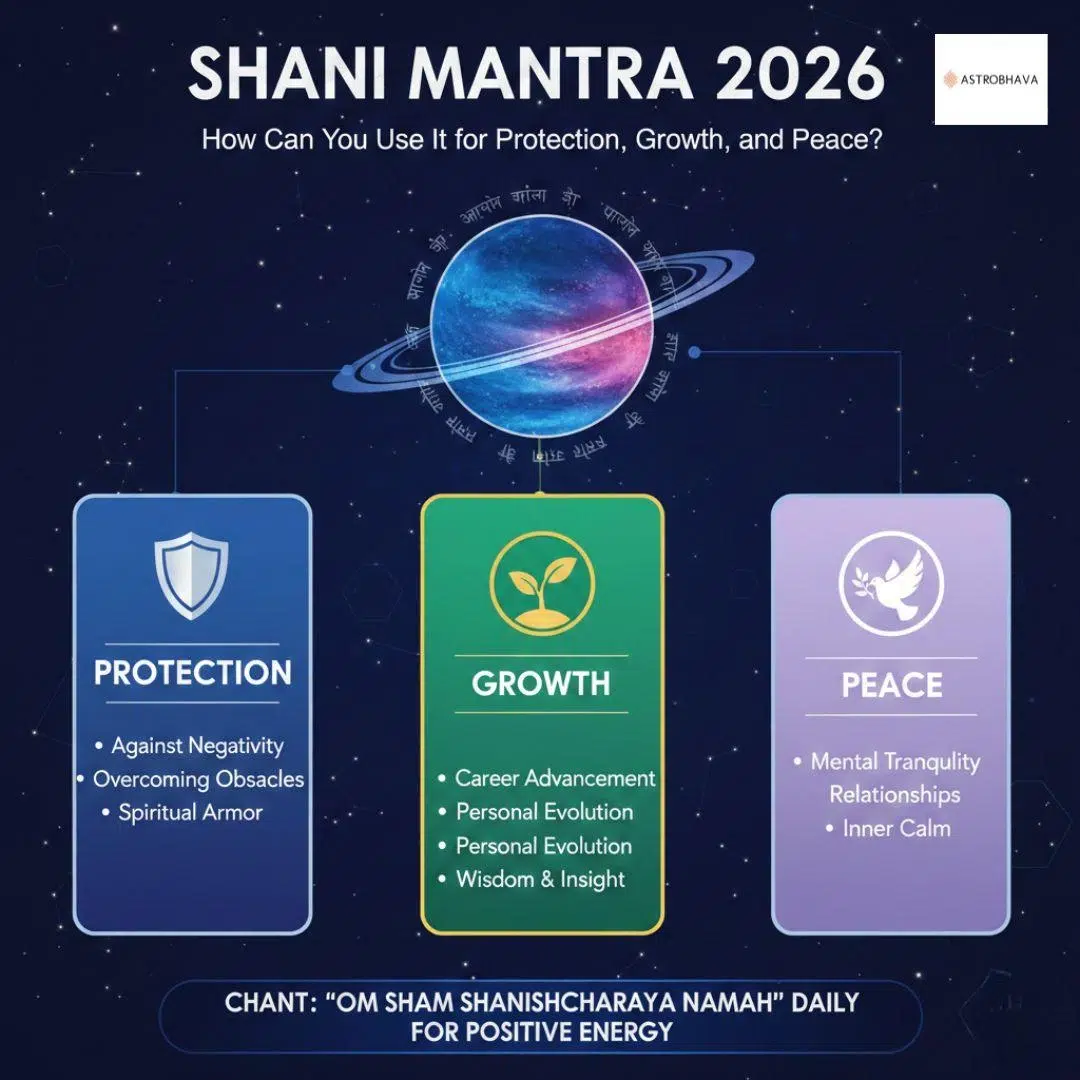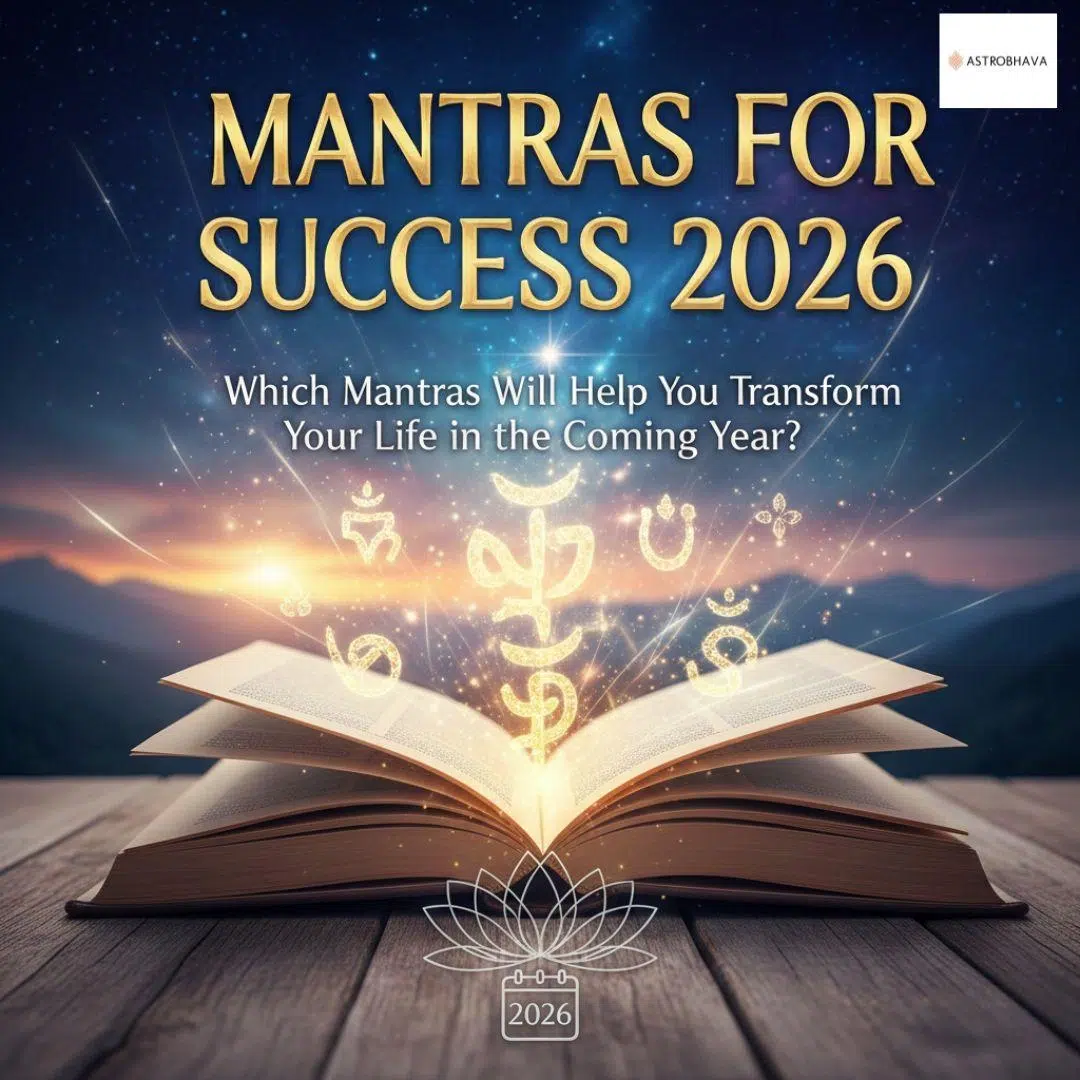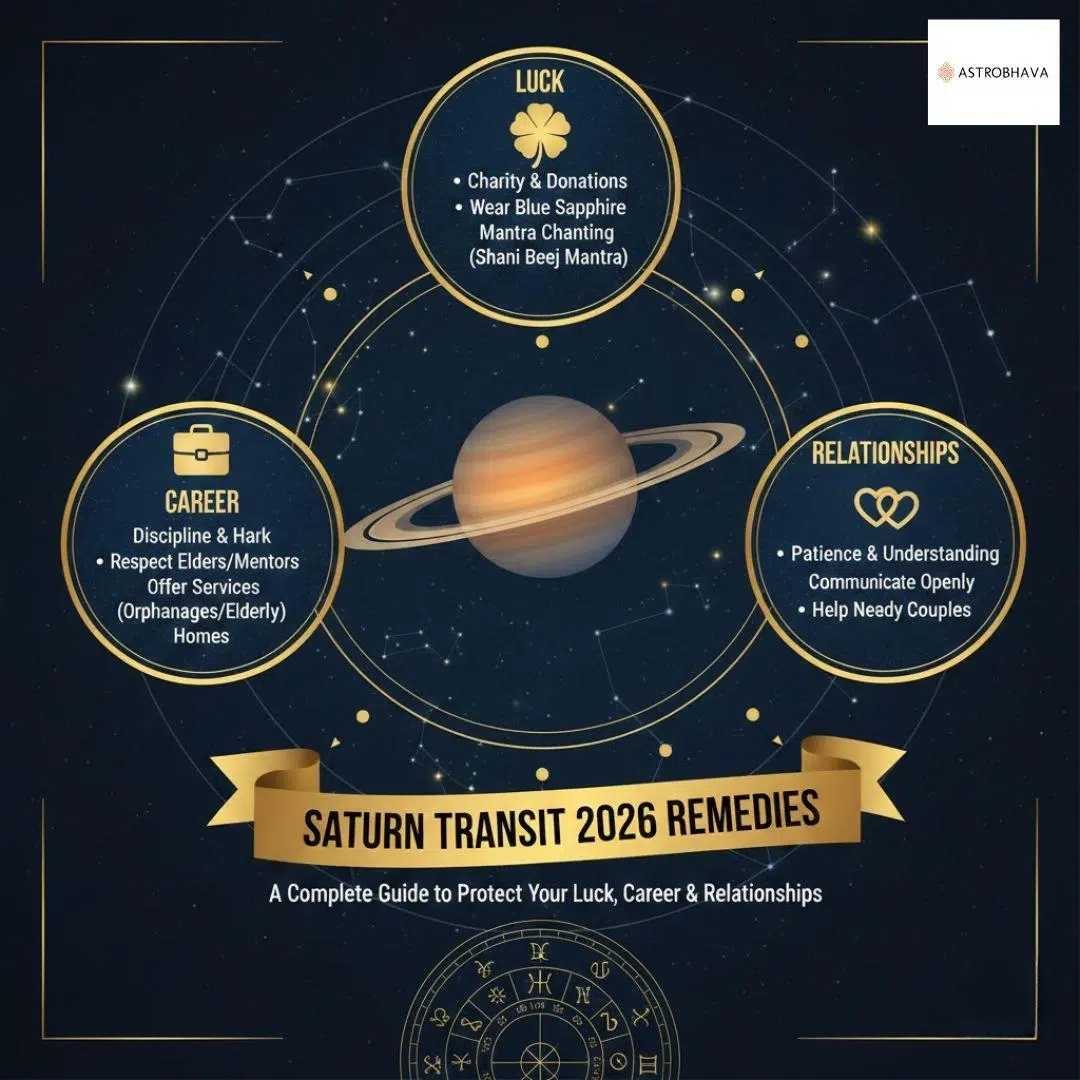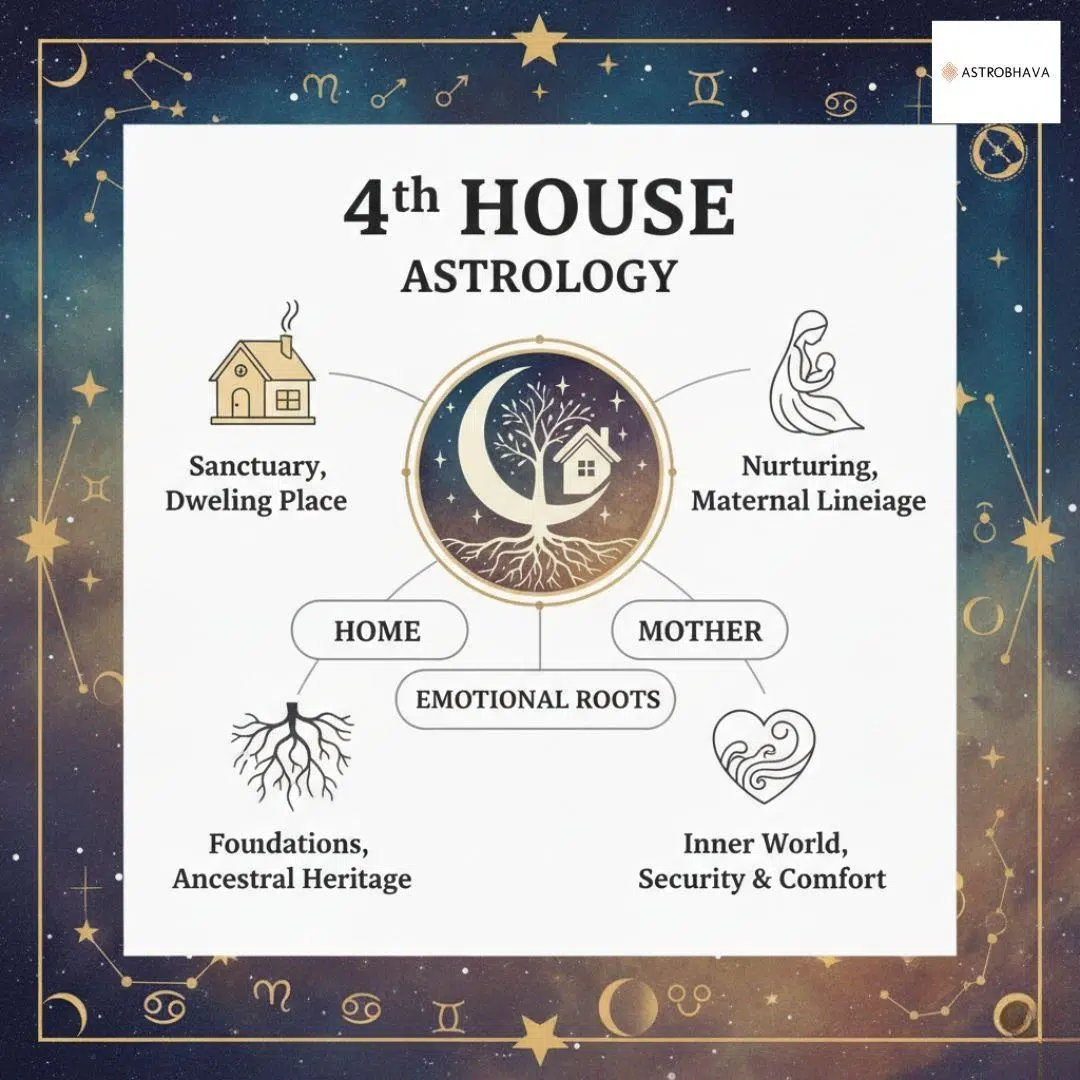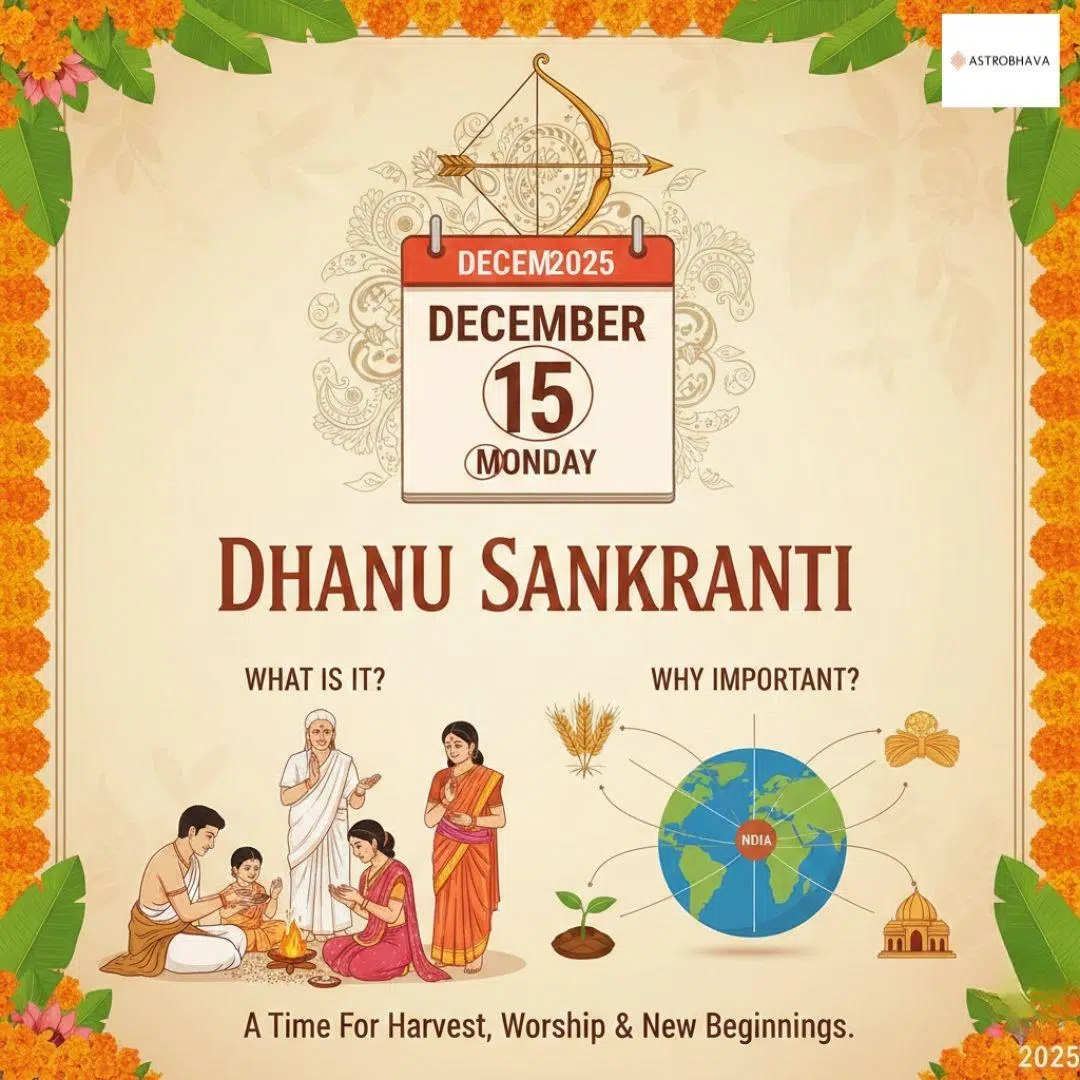Mahakumbh Mela 2025: Discover Rare Astrological Facts
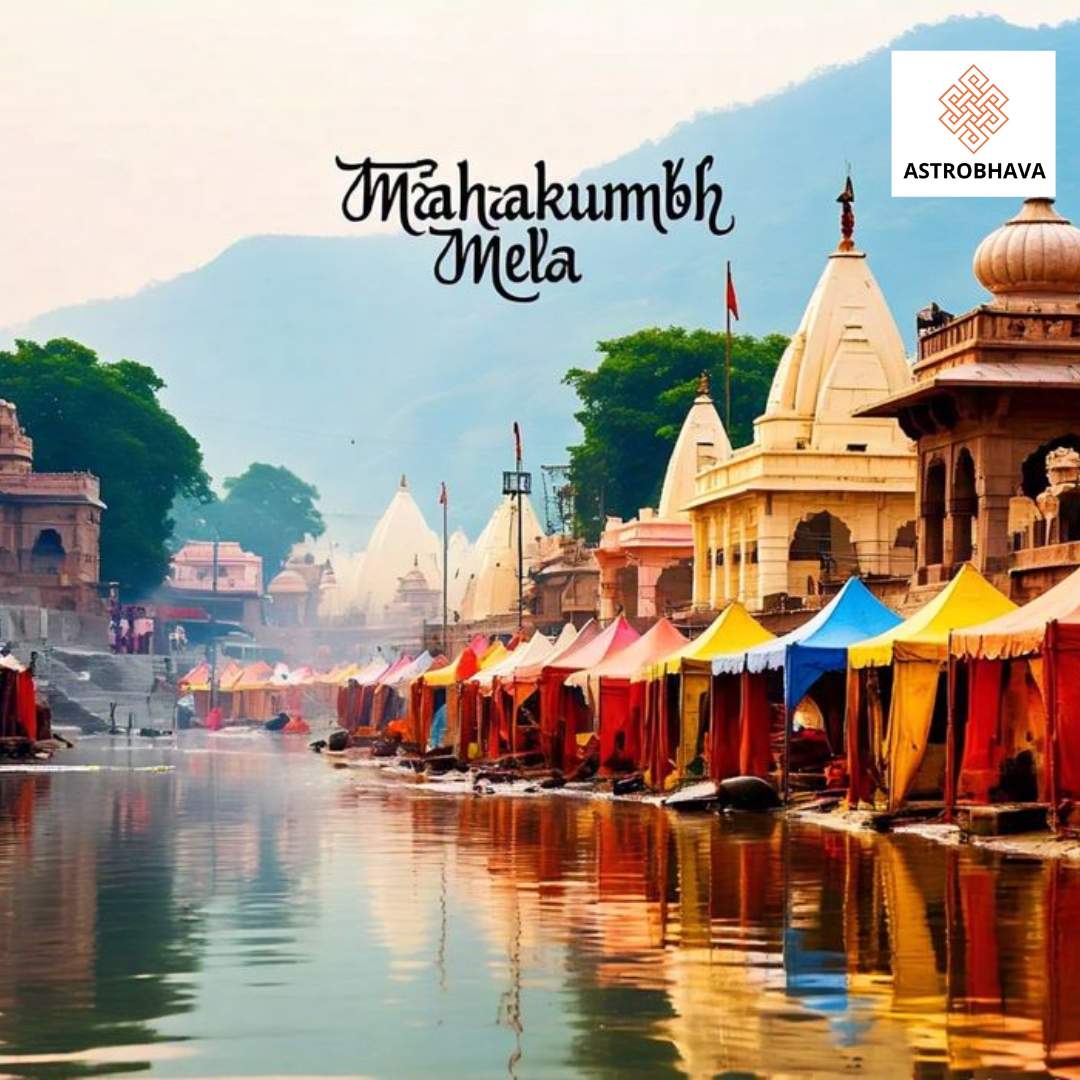
The Mahakumbh Mela, one of the largest and most spiritually significant gatherings in the world, is set to take place in 2025 in Prayagraj, India. This grand event, occurring once every 12 years, is deeply rooted in Hindu mythology and Vedic astrology. However, what makes the Mahakumbh mela 2025 truly unique are the rare astrological alignments associated with it. Let’s explore the celestial phenomena that make this Kumbh Mela extraordinarily special.
The Rarity of the Mahakumbh Mela 2025
The Mahakumbh Mela is celebrated when Jupiter (Brihaspati) transits into Aries (Mesha Rashi) and the Sun enters Capricorn (Makara Rashi). However, the 2025 Mahakumbh features additional rare planetary configurations, enhancing its astrological significance. The confluence of these celestial movements is believed to create an extremely powerful spiritual vortex, attracting millions of devotees, saints, and sages from across the world.
Astrologers suggest that such a unique configuration happens only once in several centuries, making this event particularly special. The impact of these planetary positions is said to be immensely beneficial for spiritual cleansing, soul elevation, and achieving divine wisdom.
Origin and Mythological Significance
The origin of the Kumbh Mela is linked to the Hindu legend of the Samudra Manthan (Churning of the Ocean), mentioned in the ancient scriptures like the Bhagavata Purana, Vishnu Purana, Mahabharata, and Ramayana.
According to the legend:
- The Devas (gods) and Asuras (demons) churned the ocean to obtain Amrit (the nectar of immortality).
- As soon as the pot (Kumbh) of nectar emerged, a conflict broke out between the gods and demons over its possession.
- To protect the Amrit, the celestial bird Garuda flew away with the pot. During the flight, drops of nectar fell at four places:
- Prayagraj (Allahabad) – Confluence of the Ganga, Yamuna, and mythical Saraswati rivers
- Haridwar – Banks of the Ganga River
- Ujjain – Banks of the Shipra River
- Nashik – Banks of the Godavari River
These places became sacred, and the Kumbh Mela is held at these locations every 12 years.
Historical Background
The historical records of Kumbh Mela date back over 2,000 years. Some key historical references include:
- Chinese Traveler Xuanzang (7th Century CE)
- Xuanzang (Hiuen Tsang), a Chinese Buddhist monk, visited India during the reign of Harsha (606–647 CE) and documented a grand religious gathering at Prayagraj, which many believe was an early form of the Kumbh Mela.
- Adi Shankaracharya (8th Century CE)
- The great Hindu saint Adi Shankaracharya played a key role in popularizing the Kumbh Mela by organizing it as a major religious congregation.
- He established four Mathas (monastic centers) across India and encouraged Hindu ascetics (sadhus) to participate in the Kumbh Mela.
- British Records (19th Century CE)
- During British rule, the Kumbh Mela was documented in official records.
- The 1858 Kumbh Mela at Prayagraj saw over 2 million attendees.
- In 1954, a tragic stampede occurred in Prayagraj, killing hundreds, prompting authorities to improve crowd management.
Key Astrological Alignments in 2025
1. Jupiter in Aries (Mesha Rashi)
Jupiter’s transit into Aries marks the primary astrological reason for the Mahakumbh. In Vedic astrology, Aries represents new beginnings, courage, and leadership. Jupiter, being the planet of wisdom and spiritual growth, entering Aries signifies the dawn of a new spiritual era.
Aries is ruled by Mars, a planet associated with energy, action, and determination. This means that the presence of Jupiter in Aries will infuse an unparalleled dynamism into the Mahakumbh, motivating people to seek higher knowledge and divine experiences. Devotees believe that taking a holy dip during this time will cleanse them of past karmic debts and open new doors for prosperity and enlightenment.
2. Sun in Capricorn (Makara Rashi) – The Sacred Confluence
The Sun’s movement into Capricorn, coinciding with Jupiter’s position, aligns with Makar Sankranti, a day considered highly auspicious for bathing rituals in the holy rivers. Capricorn, ruled by Saturn, represents discipline, karma, and persistence. The Sun entering Capricorn marks the end of a dark phase and the beginning of an era of knowledge and righteousness.
In ancient texts, it is said that the divine nectar (Amrit) fell at the four Kumbh locations—Prayagraj, Haridwar, Nashik, and Ujjain—during a celestial battle between gods and demons. The planetary alignment in 2025 is believed to replicate the original astrological conditions that made the first Mahakumbh possible, thereby making it an ideal time for purifying one’s soul.
3. Saturn’s Influence in Aquarius (Kumbha Rashi)
Another unique feature of the 2025 Kumbh is Saturn’s position in Aquarius, the sign symbolizing community and spiritual elevation. Saturn, known as the taskmaster of the zodiac, governs karma and teaches important life lessons through discipline and perseverance. Aquarius, being a sign of innovation, enlightenment, and higher consciousness, complements Saturn’s energies, making this a powerful period for self-reflection and growth.
During this transit, those who sincerely engage in spiritual practices, charity, and devotion are believed to receive long-lasting benefits. The presence of Saturn in Aquarius also signifies a time of social transformation, where people will seek collective well-being over individual gains.
4. Venus and Mercury in Conjunction
During parts of the mahakumbh Mela 2025, Venus (Shukra) and Mercury (Budh) will form a conjunction, fostering wisdom, devotion, and harmony. This combination enhances the overall energy of devotion and enlightenment, benefiting seekers on their spiritual journeys.
Venus is associated with love, art, and devotion, while Mercury governs communication, intellect, and analytical abilities. Their conjunction during the Mahakumbh will help in fostering deep philosophical discussions, learning from saints and scholars, and gaining clarity in spiritual pursuits. Many devotees will experience heightened intuition, enhanced meditation experiences, and a deeper connection with the divine.
5. Rahu-Ketu Axis and Its Spiritual Implications
Rahu in Pisces and Ketu in Virgo during the 2025 Mahakumbh create a mystical influence. This celestial alignment is thought to accelerate karmic cleansing and spiritual elevation, making it an ideal time for deep meditation and introspection.
Rahu, the shadow planet associated with desires and illusions, being in Pisces—the sign of spirituality and mysticism—creates an intense pull toward the divine. At the same time, Ketu, which represents detachment and past-life karma, being in Virgo signifies the need for balancing material and spiritual worlds. This placement encourages seekers to let go of worldly illusions and move toward self-realization.
“Pacify Ketu’s Energy! Book Ketu puja Now”
Why These Alignments Matter?
Each planetary movement during the 2025 Mahakumbh Mela has profound spiritual effects. According to astrologers, this rare combination of planetary positions makes the upcoming Mahakumbh one of the most potent in decades. The energies during this time are highly favorable for:
- Deep purification through ritual bathing in the sacred rivers.
- Enhanced spiritual insights and self-realization.
- Strengthened devotion and alignment with cosmic consciousness.
- The removal of past karmic burdens, allowing a fresh start on a spiritual level.
- Increased chances of attaining moksha (liberation from the cycle of birth and death).
Cultural Significance of Maha Kumbh Mela 2025
The Maha Kumbh Mela is not just a religious event but a grand celebration of India’s ancient cultural heritage. The 2025 edition, held in Prayagraj, Uttar Pradesh, will witness a confluence of spirituality, rituals, traditions, and diverse cultural expressions.
1. Spiritual and Religious Essence
- The holy dip at the Triveni Sangam (the confluence of Ganga, Yamuna, and the mythical Saraswati) is believed to cleanse sins and lead to moksha (liberation).
- Akhara processions, where different sects of saints (Nagas, Urdhwavahurs, Parivajakas, etc.) march with grandeur, showcasing the deep-rooted traditions of Hindu asceticism.
- Hindu philosophy and discourses, where religious scholars, spiritual leaders, and gurus share wisdom on dharma, karma, and devotion.
2. Unity in Diversity
- Maha Kumbh Mela is the largest peaceful congregation of humanity, welcoming pilgrims from across India and the world.
- It brings together people from various backgrounds, transcending caste, class, and nationality, fostering a sense of unity and brotherhood.
3. Cultural Extravaganza
- Folk performances, including traditional dances, bhajans, and kirtans, reflect the cultural vibrancy of different Indian regions.
- Art exhibitions displaying paintings, sculptures, and religious artifacts highlight India’s artistic legacy.
- Spiritual storytelling (Katha sessions) bring to life the mythological tales of gods, saints, and celestial events.
4. Historic and Architectural Grandeur
- The temporary city set up for Kumbh Mela is a marvel of planning and engineering, demonstrating India’s capability to manage such a massive event.
- Ancient temples and ghats in Prayagraj receive special attention, preserving and celebrating India’s architectural heritage.
5. Economic and Social Impact
- The Kumbh Mela boosts local businesses, including handicrafts, food stalls, and tourism services.
- It provides a platform for social and charitable initiatives, including free food distribution, medical camps, and educational seminars.
The Maha Kumbh Mela 2025 is a living expression of India’s cultural richness and spiritual wisdom. It is an event that blends devotion, knowledge, art, and heritage, leaving a lasting impact on the world.
Best Dates for Ritual Bathing (Shahi Snan)
Astrologers have identified specific dates that hold immense spiritual energy for taking a holy dip in the confluence of the Ganga, Yamuna, and the mystical Saraswati:
- Makar Sankranti (January 14, 2025) – Marks the Sun’s entry into Capricorn, an ideal time for spiritual elevation.
- Mauni Amavasya (January 29, 2025) – Considered the most auspicious day for bathing, as the planetary alignment is at its peak.
- Vasant Panchami (February 4, 2025) – Associated with wisdom and learning, perfect for spiritual seekers.
- Maghi Purnima (February 12, 2025) – An important day for performing ancestral rituals and charity.
- Mahashivaratri (February 26, 2025) – Dedicated to Lord Shiva, amplifying the spiritual energies of devotees.
“Elevate Your Spirit: Discover the Power of Divine Royalty Rituals“
Rituals Associated with Maha Kumbh Mela 2025
The Maha Kumbh Mela, currently underway in Prayagraj from January 13 to February 26, 2025, is a profound spiritual gathering featuring numerous rituals and ceremonies that hold deep significance in Hinduism. Key among these are:
- Shahi Snan (Royal Bath): The Shahi Snan is a central ritual where ascetics, saints, and devotees take a ceremonial dip in the sacred confluence of the Ganges, Yamuna, and the mythical Saraswati rivers. This act is believed to purify the soul and absolve sins. The Shahi Snan processions are led by various Akharas (monastic orders), with the Mahanirvani Akhara being one of the prominent participants.
- Paush Purnima Snan: The festival commenced with the Paush Purnima Snan on January 13, 2025. On this day, thousands of devotees took the first ritual bath, marking the beginning of the Maha Kumbh Mela.
- Kalpavas: Kalpavas is a month-long spiritual practice where devotees reside near the riverbanks, engaging in daily rituals such as early-morning baths in the holy river, meditation, prayer, fasting, and listening to spiritual discourses. This period of austerity and devotion is believed to lead to spiritual enlightenment.
- Yajnas (Sacred Fire Ceremonies): Yajnas are integral to the Kumbh Mela, involving offerings made into a consecrated fire accompanied by the chanting of Vedic mantras. These rituals are performed to purify the environment and seek divine blessings.
- Tilak Application: After taking the holy dip, many devotees receive a tilak—a sacred mark applied on the forehead—using substances like sandalwood paste, turmeric, or sacred ashes. This act symbolizes a divine connection and marks the individual’s spiritual journey.
- Spiritual Discourses and Devotional Singing: Throughout the festival, spiritual leaders and saints deliver discourses on Hindu philosophy and scriptures. Additionally, devotional singing and chanting sessions are held, fostering a spiritually uplifting atmosphere. These rituals, among others, form the core of the Maha Kumbh Mela’s spiritual offerings, providing devotees with opportunities for purification, devotion, and the pursuit of spiritual enlightenment.
Conclusion
The Mahakumbh Mela 2025 is not just another Kumbh; it is an astrological marvel where planetary energies align to create a spiritually charged atmosphere. This rare convergence of celestial movements makes it an ideal time for devotees, yogis, and seekers to immerse themselves in divine energy, cleansing their past karmas and embracing spiritual enlightenment. Whether you are a believer in astrology or not, attending the Mahakumbh Mela 2025 is sure to be a life-transforming experience.
FAQs
1. What is the astrological significance of Maha Kumbh Mela 2025?
Answer: Maha Kumbh Mela is held based on rare planetary alignments. The 2025 Maha Kumbh Mela in Prayagraj is special because it occurs when Jupiter (Guru) enters Aries (Mesha) and the Sun enters Capricorn (Makara). This alignment is believed to amplify spiritual energy and create a powerful time for self-purification, meditation, and divine blessings.
2. Why does Kumbh Mela take place only at specific locations?
Answer: Kumbh Mela is held at four locations—Prayagraj, Haridwar, Ujjain, and Nashik—because of their unique planetary influences. According to Hindu mythology, these places received drops of amrit (nectar of immortality) during the celestial event known as Samudra Manthan (Churning of the Ocean). The astrological positions of Jupiter, Sun, and Moon determine which location hosts the Kumbh Mela at a given time.
3. How is the timing of Maha Kumbh Mela 2025 determined?
Answer: The Maha Kumbh Mela happens once every 12 years when Jupiter (Brihaspati) enters Aries (Mesha Rashi) and the Sun enters Capricorn (Makara Rashi). The specific bathing dates, known as Shahi Snan days, are chosen based on the most auspicious planetary alignments, ensuring maximum spiritual benefit for devotees.
4. What makes the 2025 Maha Kumbh Mela astrologically unique?
Answer: The 2025 Maha Kumbh Mela is rare because of a powerful planetary combination:
- Jupiter (Guru) in Aries, enhancing spiritual awakening
- Sun (Surya) in Capricorn, increasing divine energy
- Saturn (Shani) in Aquarius, influencing karma and transformation
- A special alignment of Rahu and Ketu, affecting karmic cleansing
This rare alignment is believed to accelerate spiritual progress and purify negative karma.
5. What zodiac signs will be most affected by Maha Kumbh 2025?
Answer:
The planetary movements of Maha Kumbh Mela 2025 will strongly impact:
- Aries (Mesha) – Personal and spiritual transformation
- Capricorn (Makara) – New beginnings and karmic release
- Aquarius (Kumbha) – Heightened intuition and spiritual awakening
- Cancer (Karka) & Scorpio (Vrischika) – Healing and emotional purification
However, all zodiac signs can benefit by participating in the Mela, as the cosmic energies uplift everyone.
6. Can Maha Kumbh Mela 2025 help in reducing doshas (planetary afflictions)?
Answer: Yes! Many planetary doshas can be balanced during Kumbh Mela through rituals, mantra chanting, and holy dips. The following remedies are particularly powerful:
Rahu-Ketu Dosha – Chanting “Om Namah Shivaya” and donating black sesame seeds
Shani Dosha (Saturn affliction) – Feeding the poor and offering mustard oil in temples
Guru Dosha (Jupiter imbalance) – Offering yellow flowers and fasting on Thursdays
Manglik Dosha – Performing Hanuman puja and donating red lentils
By aligning with favorable planetary energies, devotees can experience relief from negative influences.
Categories
- 10th House meaning
- 12th house astrology
- 12th House Moon meaning
- 1st house in astrology
- 2025 astrology
- 2025 festivals
- 2025 planetary movements
- 27 nakshatras
- 2nd house astrology finance
- 2nd house in astrology
- 2nd house in astrology explained
- 3rd house in astrology
- 4th house in astrology
- 9th house moon astrology
- abundance mantra
- Antardasha
- aries personality
- aries traits
- aries zodiac sign
- ascendant in astrology
- astro guide
- astro predictions 2025
- astro remedies
- astro tips
- Astrobhava
- Astrobhava astrology
- Astrobhava blog
- astrological effects
- astrological guidance
- astrological love compatibility
- Astrological love languages
- astrological planets
- Astrological Remedies
- astrology
- astrology 2025
- astrology 2026
- astrology 2nd house meaning
- astrology basics
- astrology benefits
- astrology calculator
- astrology career path
- astrology career prediction
- astrology compatibility
- astrology consultation
- astrology for business
- astrology for wealth
- astrology gemstones
- astrology guide
- Astrology Guides
- astrology houses
- astrology houses guide
- astrology insights
- astrology love guide
- astrology lucky color
- astrology predictions
- astrology remedies
- astrology remedies for job
- Astrology Remedies for Wellness
- astrology rituals
- astrology solutions
- astrology soulmate signs
- astrology sun planet
- astrology tips
- auspicious yogas
- Bhagavad Gita Jayanti
- birth chart
- birth chart analysis
- birth chart planets
- birth chart reading
- birth star matching
- business astrology
- business partnership astrology
- business success astrology
- career astrology
- Career Astrology & Personal Growth
- career astrology remedies
- career by nakshatra
- career growth remedies
- career stagnation remedies
- color astrology
- communication astrology
- communication planet
- compatibility chart
- Cosmology
- daily mantras
- Dasha
- dasha period calculator
- Dasha system
- Dhanu Sankranti 2025
- divine blessings
- dosha
- dosha remedies
- dreams interpretation
- dreams meaning
- Ekadashi benefits
- Ekadashi rituals
- Ekadashi vrat
- emotional astrology
- emotional compatibility
- emotional growth astrology
- emotional healing
- entrepreneurial astrology
- Festivals & Vedic Rituals
- financial astrology
- fire sign aries
- first house meaning
- fourth house meaning
- Gaja Kesari Yoga
- Gaja Kesari Yoga benefits
- gemstone astrology
- gemstone benefits
- Gita Jayanti 2025 astrology
- Gita Jayanti astrology
- hindu astrology
- Hindu calendar 2025
- Hindu fasting
- Hindu Festivals
- Hindu festivals 2025
- Hindu festivals astrology
- hindu rituals
- Homa and Fire Rituals (Yagna)
- home and family astrology
- horoscope
- horoscope 2025
- horoscope analysis
- horoscope colors
- horoscope correction
- horoscope guide
- horoscope insights
- horoscope matching
- horoscope reading
- horoscope remedies
- horoscope yoga benefits
- Indian astrology
- insightful trade
- Japa
- job astrology
- Jupiter Moon yoga
- kundli matching
- kundli reading
- lagna in astrology
- Latcharchana remedies
- list of 27 nakshatras
- lord of nakshatra
- love astrology
- love horoscope
- love match astrology
- lucky color for zodiac signs
- lucky gemstones
- lunar rituals
- lunar signs
- Mahadasha
- Mahadasha Calculator
- mahadasha effects
- Mahadasha periods
- Mahadasha prediction
- Mahadasha remedies
- mahadasha results
- Makar Sankranti
- manifestation mantras
- Mantra
- mantra chanting tips
- mantras for success 2026
- Margashirsha puja
- Margashirsha Purnima 2025
- Margashirsha rituals
- Marriage Auspicious Day
- marriage matching
- match making astrology
- Mercury direct 2025
- mercury direct meaning
- Mercury in astrology
- Mercury planet
- Mercury Retrograde
- Mercury Retrograde dates
- Mercury Retrograde effects
- mindset improvement
- Moon and profession
- Moon astrology
- Moon astrology insights
- Moon effects in astrology
- Moon house meaning
- Moon in 10th House
- Moon in 11th House
- Moon in 12th House
- Moon in 6th House
- Moon in 6th House effects
- Moon in 6th House remedies
- Moon in 7th House
- Moon in 7th House astrology
- Moon in 7th House effects
- Moon in 7th House love
- Moon in 7th House marriage
- Moon in 7th House meaning
- Moon in 7th House remedies
- Moon in 8th House
- moon in 8th house love
- moon in 8th house marriage
- moon in 9th house
- moon in 9th house effects
- Moon in Astrology
- moon in eighth house effects
- Moon in Eleventh House meaning
- moon in ninth house meaning
- Moon in Sixth House astrology
- Moon in tenth house career
- moon meaning
- Moon placement
- Moon placement in 7th House
- nadi astrology
- Nakshatra and Mahadasha
- nakshatra astrology
- nakshatra calculator
- nakshatra career guide
- nakshatra characteristics
- Nakshatra compatibility
- nakshatra guide
- nakshatra healing
- nakshatra job compatibility
- Nakshatra Lord
- nakshatra matching for marriage
- nakshatra meaning
- Nakshatra Remedies
- nakshatra ruler
- nakshatras
- natal chart analysis
- natal chart meaning
- numerology
- online astrology tool
- Panchami Festival
- partnership compatibility
- past karma
- past karma astrology
- personality in astrology
- Pilgrimage
- planet mercury meaning
- planetary dasha calculator
- planetary insights
- planetary mahadasha
- planetary periods
- planetary remedies
- planetary retrograde
- planetary transits 2025
- planets houses
- positivity rituals
- powerful astrology solutions
- powerful mantras
- Progency
- Puja & Rituals
- puja remedies
- Purnima 2025
- relationship astrology
- Relationships
- religious dates India
- remove career blockages
- retrograde meaning
- rudra puja
- Rudraksha and gemstone
- sankranti 2025
- Sankranti puja
- sankranti rituals
- Saphala Ekadashi 2025
- Saturn japa
- Saturn remedies
- saturn transit 2026 remedies
- shani dev mantra
- Shani dosha
- Shani japa benefits
- Shani mantra
- shani mantra 2026
- shani mantra benefits
- shani remedies
- Spiritual Astrology
- spiritual benefits
- spiritual growth
- Spiritual Guide
- spiritual healing
- Spiritual Practices and Chanting
- spiritual remedies
- Spiritual Rituals and Personal Empowerment
- spiritual significance
- Spiritual Tools & Personal Growth
- Spiritual Wellness and Protection
- Spirituality and Rituals
- Spirituality or Vedic Rituals
- star sign compatibility
- success mantras
- sun and zodiac signs
- Sun in Astrology
- sun in horoscope
- sun planet effects
- sun planet meaning
- sun power in astrology
- temple rituals
- transit astrology
- twin flame astrology
- Twin Flame Astrology Signs
- twin flame compatibility
- twin flame signs
- Utpanna Ekadashi 2025
- Utpanna Ekadashi dates
- Utpanna Ekadashi rituals
- Utpanna Ekadashi significance
- Vaikuntha Dwar
- Vaikuntha Ekadashi 2025
- Vastu Tips
- Vedic Astrology
- vedic astrology tools
- Vedic remedies
- Vivaah Panchami
- Vivaah Panchami Puja
- Vivaah Panchami Rituals
- Vivaah Panchami Significance
- vrat guide
- vrischik sankranti puja
- vrishchik rashi
- Vrishchik sankranti
- yantras
- yoga effects
- zodiac astrology
- zodiac colors meaning
- zodiac compatibility
- zodiac lucky colors
- zodiac moon traits
- zodiac relationships
- Zodiac Signs







